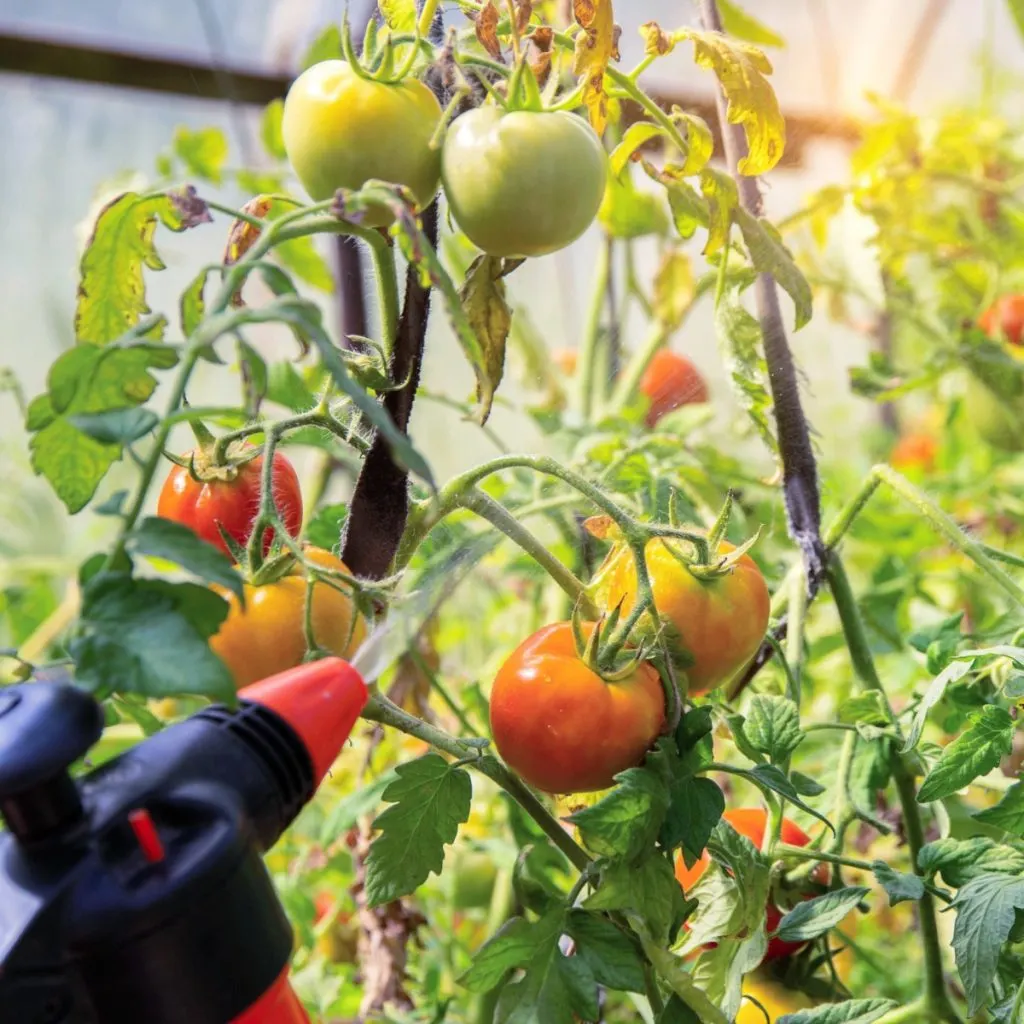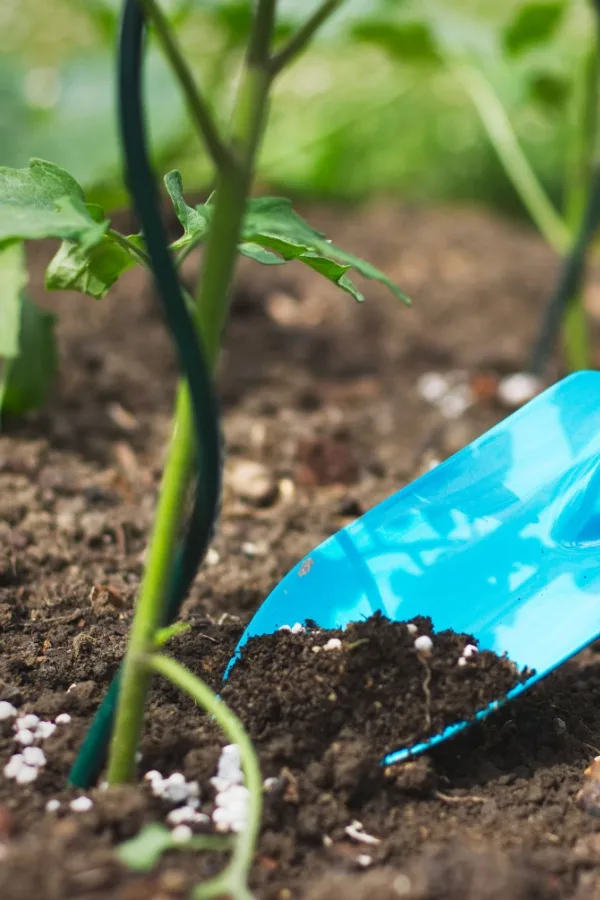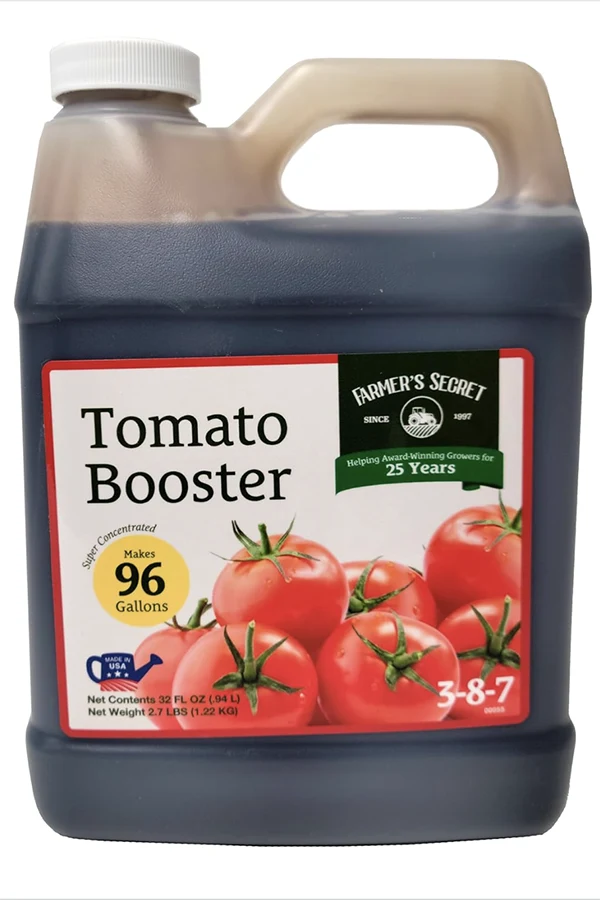Did you know that what you use to fertilize your tomatoes can play a huge difference in not only your tomato plant’s growth but also how much they produce all summer long – and that the best way to fertilize your plants is with a liquid fertilizer?
Tomato plants are one of the heaviest feeders of all garden crops. They require a massive amount of nutrients and resources from the soil in order to produce full foliage as well as blooms and eventually fruit.
Even the most fertile soil cannot provide tomato plants with the nutrients needed to power tomato plants all summer long. Because of this, giving plants much-needed doses of fertilizer can work wonders to provide plants with the nutrients they need most – like nitrogen, phosphorous, potassium, magnesium, calcium, and so much more.

While there are all kinds of types of fertilizers available, when it comes to tomato plants, liquid fertilizers are the way to go. Liquid fertilizers work fast. Not only do they absorb into the plant’s roots, but they can also act as foliar fertilizers, absorbing directly into the plant’s leaves as well.
With powering your tomato plants in mind – here is a look at how to fertilize your tomato plants like a pro with liquid power!
How & When To Fertilize Tomatoes With Liquid Fertilizers
Why Tomatoes Need Liquid Fertilizers
As mentioned earlier, tomato plants are very heavy feeders. Once the soil runs out of the vital nutrients they need – which will happen at some point during the growing season – not only is the plant’s production reduced, but its overall health is also negatively affected.
When tomato plants don’t have enough energy and power, they quickly begin to lose steam. The stems as well as the roots start to shrivel up, causing issues with water absorption. Before long, the plant starts dropping foliage – foliage that is needed to soak up the sun and feed the plant.
Having small roots as well as stems also results in plants that are vulnerable and weak. This can leave them more susceptible to insect invasions as well as deadly diseases. See our article: How To Get Rid Of Aphids On Tomato Plants

Types Of Fertilizers
There are two main types of fertilizers available: granular and liquid. While they each have their benefits, liquid is best when it comes to powering tomatoes.
Granular fertilizers work to slowly release nutrients over a long period of time. Gardeners sprinkle the granules around the base of each plant and work them into the soil. Every time you water or it rains, nutrients get released into the soil. The issue for tomatoes is that they work too slowly and fail to quickly provide tomato plants with the extra boosts of nutrients they need.
Even better, unlike with granular fertilizing, you can incorporate liquid fertilizing as part of your watering plan. Most types work by being absorbed by the roots of plants as well as through the plant’s foliage. This provides plants with double the amount of nutrients instantaneously!

Another great advantage of using liquid fertilizers is that you can dilute their strength to meet your plant’s specific needs. This is actually a huge factor for tomato plants as you will see later in the article – because it allows you to fertilize lighter but more often.
Selecting The Best Liquid Fertilizer – Fertilize Tomatoes With Liquid Fertilizers
Most fertilizers consist of mainly of Nitrogen (N), Phosphorous (P), and Potassium (K). Each nutrient does different things to help power tomato plants. For example, Nitrogen helps grow and fill in foliage. Phosphorous and Potassium help plants set blooms and fruit.
Nitrogen is especially important for plants early on in the growing cycle, but you want to discourage this once the plant starts to set blooms. If not, all of the plant’s energy will go towards becoming big and beautiful but have few blooms and fruit.
Phosphorous helps plants to produce strong and healthy roots. Having a strong root system will allow plants to absorb more nutrients and moisture. In addition, phosphorous helps plants to develop and ripen fruit.

Potassium is similar to phosphorous in that it helps ripen fruit, but it helps with a plant’s overall vitality and health. In addition, it also helps the fruit form the necessary sugars that make the tomatoes taste so sweet and delicious.
After the first couple of weeks past transplanting, focus on using a liquid fertilizer that has more phosphorous and potassium than nitrogen. In fact, look for a liquid fertilizer that has almost double the amount of phosphorous and potassium nutrients as it does nitrogen. Product Link: Farmer’s Secret Tomato Booster Fertilizer
How To Fertilize Tomatoes With Liquid Fertilizers
The secret to successfully powering tomatoes with liquid fertilizers is to use them more frequently but at lower doses. Unlike watering tomatoes, where you want to water less often but more deeply, it’s best to fertilize tomatoes with lower doses of liquid fertilizer but more often.
By doing so, you are providing plants with a consistent dose of nutrients without overpowering them. This is something that can easily happen if you were to use the recommended doses.
Aim to fertilize tomatoes every 10 to 14 days, but use half of the recommended dose on the container. Fertilize them either early in the day or late at night to avoid the heat of the afternoon sun.
This simple task will help to keep your tomato plants healthy, strong, and producing loads of delicious fruit long throughout the summertime!
I Grow Tomatoes
Follow Our Facebook Page For Even More Great Tomato Growing Tips! I Grow Tomatoes Facebook Page
I Grow Tomatoes is a website created for those who love all things about tomatoes – from planting and growing – to cooking and canning! We publish two articles every week, 52 weeks a year. Sign up today to follow via email! This article may contain affiliate links.
